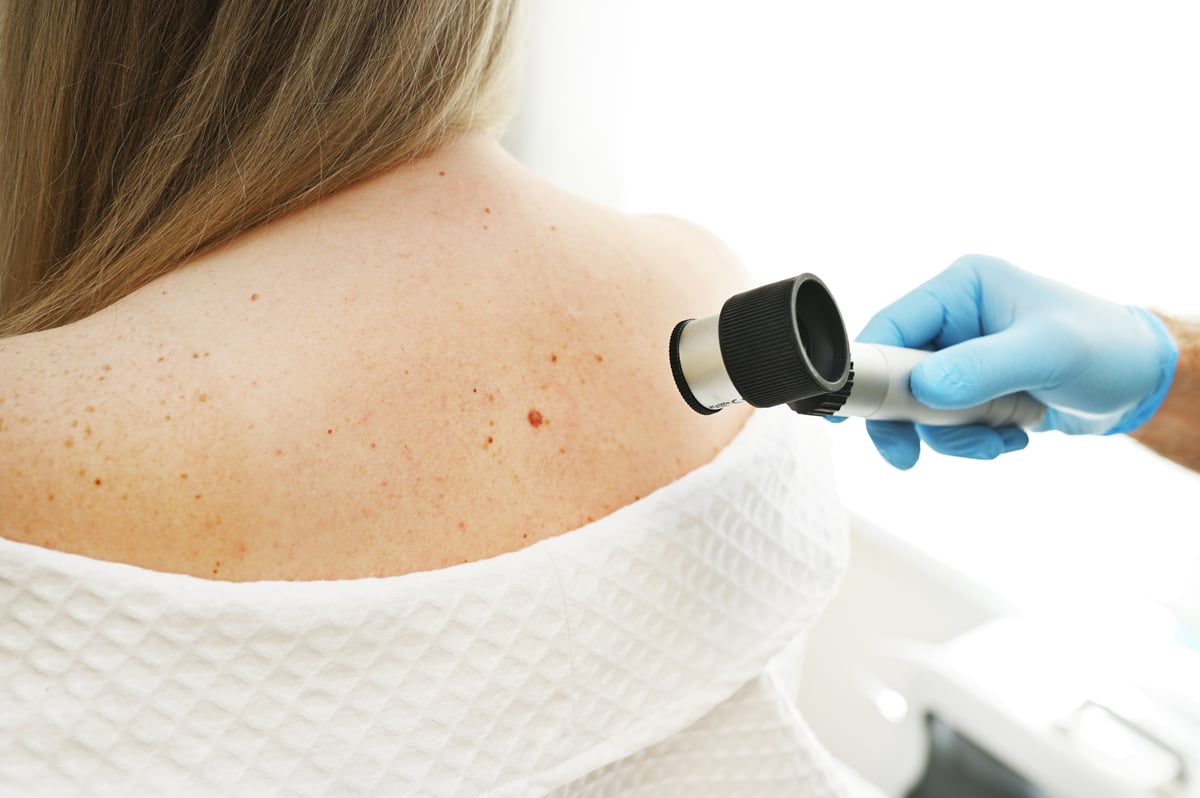
In the final years of his life, my dad discovered a melanoma on his back. It became part of a general disintegration of his health, and not what killed him. But, still, it was horrid.
Most likely, this disease was lifestyle-related, as my dad had spent years living in a hot country. He would bake himself there, like a well-basted turkey. Indeed, that’s what everyone did back then.
You’d put lemon juice in your hair, and olive oil on your skin. Nobody would bother putting factor 50 on their children either. In fact, I remember going on a family holiday to Malaga, when I was about six, and burning myself so badly that I cried every night, because it hurt to turn over in bed .
There was no preventative sunscreen. Just pink baths full of calamine lotion for after the event. The thought makes me shudder, now.
Still, I’m not a sun worshipper. Quite the opposite. I’m the sort who finds the heat tortuous.
I’m always the first to go indoors. The mad dogs and Englishmen can have it all to themselves. Perhaps that counts in my favour, as Cancer Research UK says that 86 per cent of skin cancer cases in the UK are preventable.
However, there can be a small genetic component to melanoma. Also, having pale skin - I’m almost transparent, like a sheet of tracing paper - can make you more susceptible. That’s why, for a while, I’ve toyed with the idea of getting my moles checked out.
According to Cancer Research UK, the symptoms to look out for include areas of skin that look unusual, don’t heal within four weeks, and hurt, are itchy or scab. I don’t have anything like that. Still, there are a couple of strange new additions, and I feel that I’m getting to the age when one’s chickens start heading home to roost.
Thus, when they asked me to come along to try a full body screening at The Mole Clinic, which has just moved into, Dr Victoria Skin Clinic in Edinburgh , all my moles leapt in unison at the chance. “You must,” they shrieked, like Richard E Grant’s talking boil in the film How to Get Ahead in Advertising. “ Summer is over, so, before you swathe us in knitwear , do it.
” Fair enough. I’d been putting this off for long enough, as I have a mental block when it comes to bothering my GP, especially when I think I ‘m just being a hypochondriac. However, I knew it was going to be cringe, even if the nurse, Angela, makes sure that the experience isn’t too embarrassing.
She preserves your dignity with a blue paper hospital gown, with sections moved aside so she can look at areas, one by one. Just make sure you’re wearing some decent underwear, not SpongeBob Y-fronts teamed with a grey bra that predates the Pictish era. She takes your family history, and asks if there are any moles of concern.
In this treatment room, there’s a chart that features the baddies and the goodies. The brown, red and flesh-toned blobs all look very similar to me, so I’m glad there’s an expert on hand. I have a mark that I’d Googled earlier.
Not a good idea, as now I’m slightly concerned that it’s a basal cell carcinoma. Anyway, she says that we’ll get to that. Angela works first around my hairline, and parting, because these sun-exposed areas can be quite common hiding places for melanomas and carcinomas.
She also looks behind my ears. Peekaboo, nothing there, except, presumably, muck. Then, my arms, which are the holy moley-est parts of my body.
She can tell by touch - they are all smooth, soft and pliable - and checking out their even symmetry and shape that these are nothing to fret about. Onto my legs, and there’s not much to see. She also checks between my toes and toenails as, apparently, cancerous moles can grow in and under nails and hidden spots.
Apparently, she often sees patients when something has been flagged up at an appointment with a podiatrist, physiotherapist or other physical specialist. I tell her about my sister’s friend, and how a masseur was the one who discovered the melanoma on her back. That’s not an unusual scenario.
Next, we’re onto my torso, and the flesh-toned blemish that I’m worried about. She’s not concerned at all. It’s a seborrhoeic keratosis - often genetic and common, and they can just appear.
I have a few of those that I didn’t know about, especially on my back, as well as a couple of cherry angiomas, which are the little red and benign spots. The only one that Angela thinks might be a worry is on my face, under my brow. It’s minuscule, and I thought it might be an ingrown hair.
She looks at it under her dermatoscope, and takes a photo, to send to their doctor for further investigation. The next day, I get a call, to say that they’re not too concerned, but suggest I see my GP, just to be certain. It could be an actinic keratosis, which falls into the pre-malignant category, or just another of the common or garden seborrhoeic keratosis.
If it’s the slightly more sinister option, the doctor might give me a cream to clear it up, or remove it. Whatever, it’s not a big deal. I’m grateful to know, and am booking that appointment with my GP asap.
A Full Body Skin Check is £195 with The Mole Clinic, www.themoleclinic.co.
uk For more information on skin cancer, including symptoms to watch out for, see www.cancerresearchuk.org.














